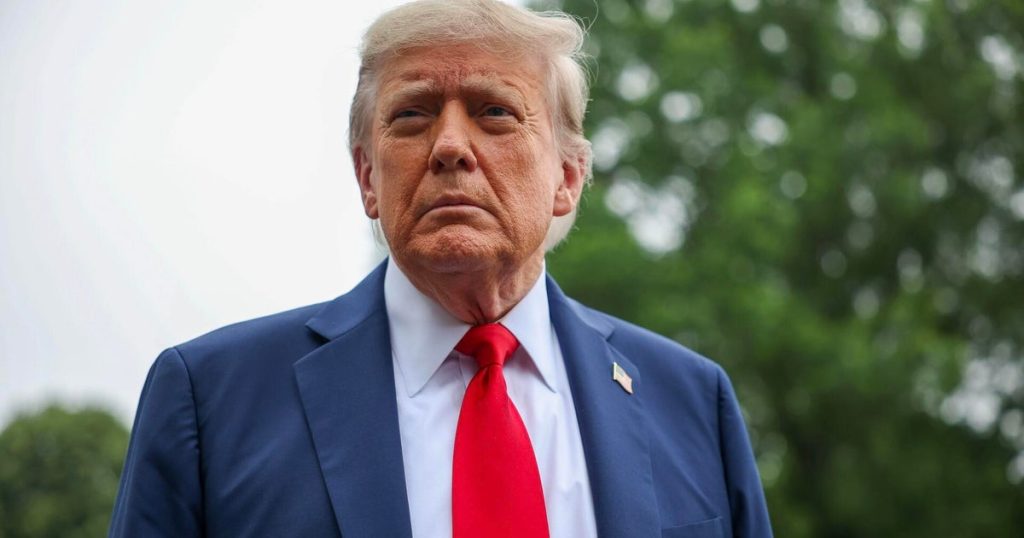In a significant legal decision, a federal judge has intervened against President Trump’s administration to halt severe cuts to research funding by the National Science Foundation (NSF). The ruling, delivered by U.S. District Judge Indira Talwani, emphasized that the proposed funding changes would have detrimental impacts on universities across the nation, endangering crucial research in areas such as artificial intelligence and cybersecurity. This decision arrives in the wake of enforced policies perceived as undermining the financial support necessary for high-level academic and research endeavors.
| Article Subheadings |
|---|
| 1) Ruling Blocks Funding Cuts |
| 2) Implications for Research Funding |
| 3) Overview of the Controversy |
| 4) Challenges from Academic Institutions |
| 5) Future Prospects for Research Grants |
Ruling Blocks Funding Cuts
On Friday, Judge Indira Talwani issued a ruling in Boston that effectively halts the implementation of significant funding cuts proposed by the Trump administration to the NSF. This decision arose from legal challenges mounted by various universities impacted by these proposed funding adjustments. The judge characterized the NSF’s policy changes as “arbitrary and capricious,” which means they lacked a reasonable basis and violated existing laws regarding funding processes. This ruling serves as a pivotal moment in the legal struggles surrounding federal research funding.
Implications for Research Funding
The NSF provides essential support to scientific research by covering not only direct costs associated with research projects but also “indirect” costs, which encompass necessary expenses such as facility maintenance and administrative support. Historically, the NSF has calculated each institution’s indirect costs based on actual expenses. However, the recent policy threatened to cap these indirect costs at just 15% of direct research costs. This cap could have imposed severe financial restrictions, leading to an estimated loss of approximately $100 million annually for institutions like the University of California alone.
Overview of the Controversy
The core issue arises from the categorization of indirect costs by the Trump administration, which dismissed them as mere overhead. This perspective sharply contrasts with how many universities view these costs as vital components necessary to sustain research operations. Institutions argued that the abrupt policy changes jeopardized ongoing projects in critical technological fields, including artificial intelligence, semiconductors, and cybersecurity. The abruptness and perceived capriciousness of this funding policy shift led to widespread concern among academic communities.
Challenges from Academic Institutions
In response to the proposed funding cuts, numerous academic institutions, led by the University of California, mobilized legal action. They contended that the Trump administration’s guidelines not only jeopardized individual research initiatives but also risked undermining the United States’ overall leadership in technological innovation and research. Moreover, this legal challenge echoes earlier successful objections to similar caps placed by the Trump administration on grants managed by the Department of Energy and the National Institutes of Health. Their success in court could pave the way for further opposition against federal funding cuts across various research bodies.
Future Prospects for Research Grants
Looking ahead, the ruling by Judge Talwani ensures current funding levels for NSF grants, alleviating some immediate concerns for researchers and universities. However, the broader implications regarding federal funding policies remain uncertain as the Trump administration continues its efforts to implement budgetary constraints. The sustained advocacy from academic institutions and their commitment to protecting research funding will be crucial to navigate upcoming challenges, both legal and administrative, that may arise from future policy debates.
| No. | Key Points |
|---|---|
| 1 | Federal judge blocks Trump administration’s proposed cuts to NSF funding. |
| 2 | Indira Talwani classifies funding changes as arbitrary and capricious. |
| 3 | Indirect costs critical for university research may have been capped at 15% inaccurately. |
| 4 | Significant financial implications, potentially leading to annual losses of $100 million for key institutions. |
| 5 | Future of research grants remains uncertain amid continuing federal funding policy changes. |
Summary
The recent ruling by Judge Indira Talwani serves as a crucial victory for academic institutions and research communities facing potentially devastating funding cuts imposed by the Trump administration. By blocking these changes, the decision not only secures essential financial support for groundbreaking research but also reaffirms the legal principles governing research funding. The broader implications of this case signify ongoing tensions between federal funding policies and the interests of higher education, setting the stage for future advocacy and legal disputes.
Frequently Asked Questions
Question: What actions did Judge Talwani take regarding NSF funding?
Judge Indira Talwani blocked proposed cuts to the National Science Foundation’s funding, determining that the changes were arbitrary and violated existing laws.
Question: How might the funding cuts affect universities?
The proposed funding cuts could have resulted in an estimated loss of nearly $100 million annually for key institutions, jeopardizing ongoing research in critical fields.
Question: What are indirect costs in research funding?
Indirect costs represent expenses not directly linked to specific research projects, including facility maintenance and administrative support, vital for the operational sustainability of research initiatives.


